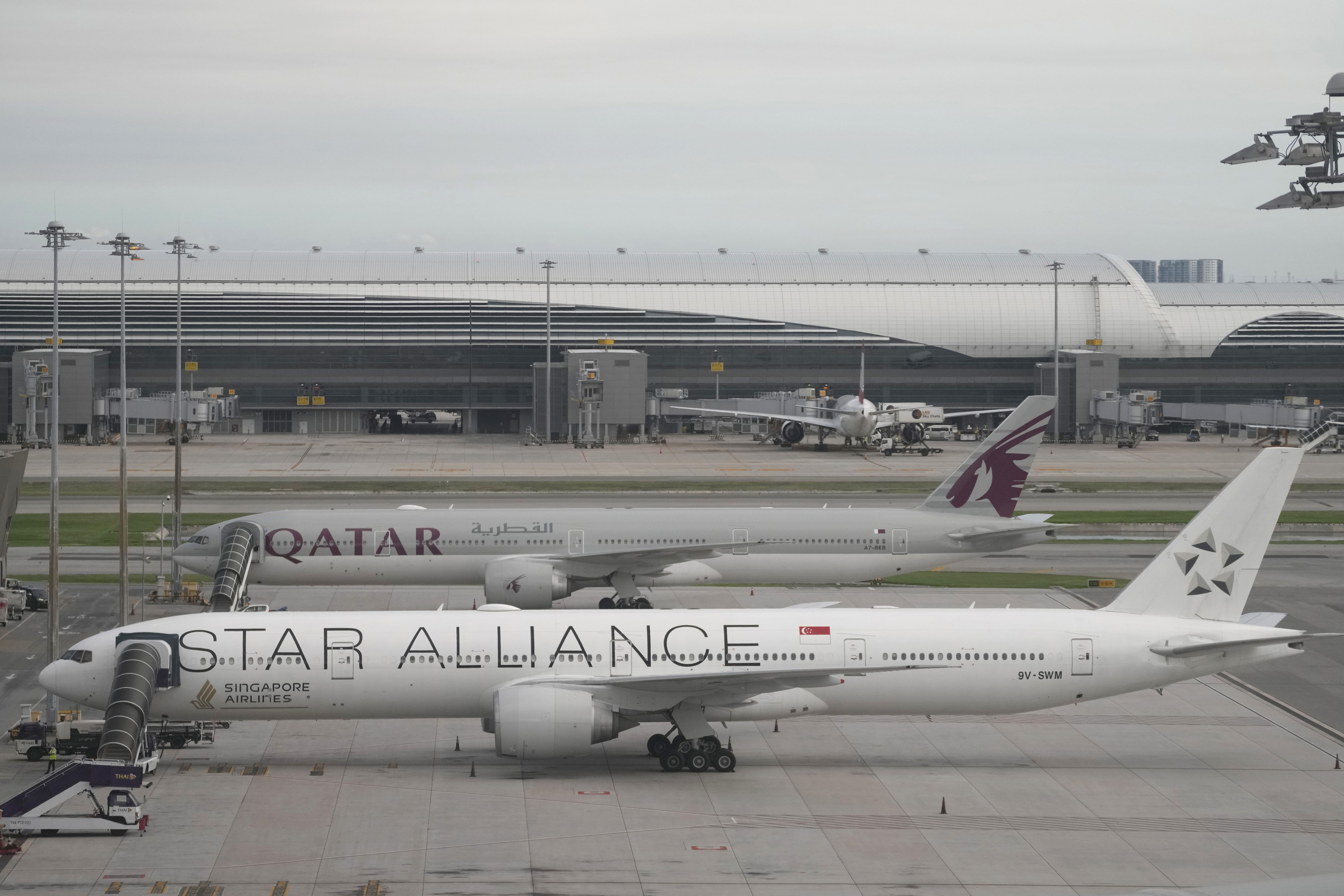Singapore Airlines said Friday it will halt meal services and get all cabin crew to buckle up when planes fly through turbulence as part of tighter cabin measures after one person died and dozens were injured on a flight from London this week.
The airline said it has adopted a "more cautious approach to managing turbulence in-flight" after the Boeing 777 jet heading to Singapore hit extreme turbulence in the Irrawaddy basin on Tuesday, hurling people and items around the cabin.
"In addition to the suspension of hot beverage service when the seat belt sign is on, the meal service will also be suspended," the airline said in a statement. "Crew members will also return to their seats and secure their seat belts when the seat belt sign is on."
The plane, carrying 211 passengers and 18 crew members, made a sharp 6,000-foot (around 1,800-meter) descent in about three minutes, after which it diverted to Thailand. Officials said the turbulence was believed to have occurred when meals were being served and many people were not using seat belts. A 73-year-old British man died of a suspected heart attack. Forty-six passengers and two crew members remained hospitalized Friday.
Passengers have described the "sheer terror" of the aircraft shuddering, loose items flying and injured people lying on the floor of the plane.
Singapore Airlines said other existing safety measures during poor weather conditions include getting crew members to secure loose items in the cabin and galley to minimize turbulence-related injuries, advising passengers to return to their seats and buckle up, and monitoring passengers who may need assistance such as those in the toilet.
"Pilots and cabin crew are aware of the hazards associated with turbulence. They are also trained to assist customers and ensure cabin safety throughout the flight," the airline said. "SIA will continue to review our processes as the safety of our passengers and crew is of utmost importance."
The Singapore Straits Times newspaper said public records showed that authorities have investigated six other Singapore Airlines flights hit by turbulence in the past two decades, in which some passengers and crew members were injured. Tuesday's incident was the only one involving a fatality.
Singapore Transport Minister Chee Hong Tat said investigators in Bangkok have secured data from the plane's cockpit voice recorder and the flight data recorder. "They are going through the data from these two recorders now to be able to ascertain what happened during those moments," Chee told local media.
It is unclear what caused Tuesday's severe turbulence. It is believed to have been clear air turbulence, the most dangerous type that often occurs with no visible warning in the sky ahead. Wind shear can occur in wispy cirrus clouds or even in clear air near thunderstorms, as differences in temperature and pressure create powerful currents of fast-moving air.
Samitivej Srinakarin Hospital, where most of the 104 people hurt in the incident were treated, has said that the 48 people still hospitalized include those spinal or spinal cord damage, skull or brain injuries and damage to bones or internal organs.
Twenty people remained in intensive care, but the hospital said none was in life-threatening condition. They include six Britons, six Malaysians, three Australians, two Singaporeans and one person each from Hong Kong, New Zealand and the Philippines.
Singapore Airlines has issued a deep apology over the incident. Its CEO, Goh Choon Phong, has pledged it will cooperate fully in the investigation and has visited those in the hospital to offer his support.
